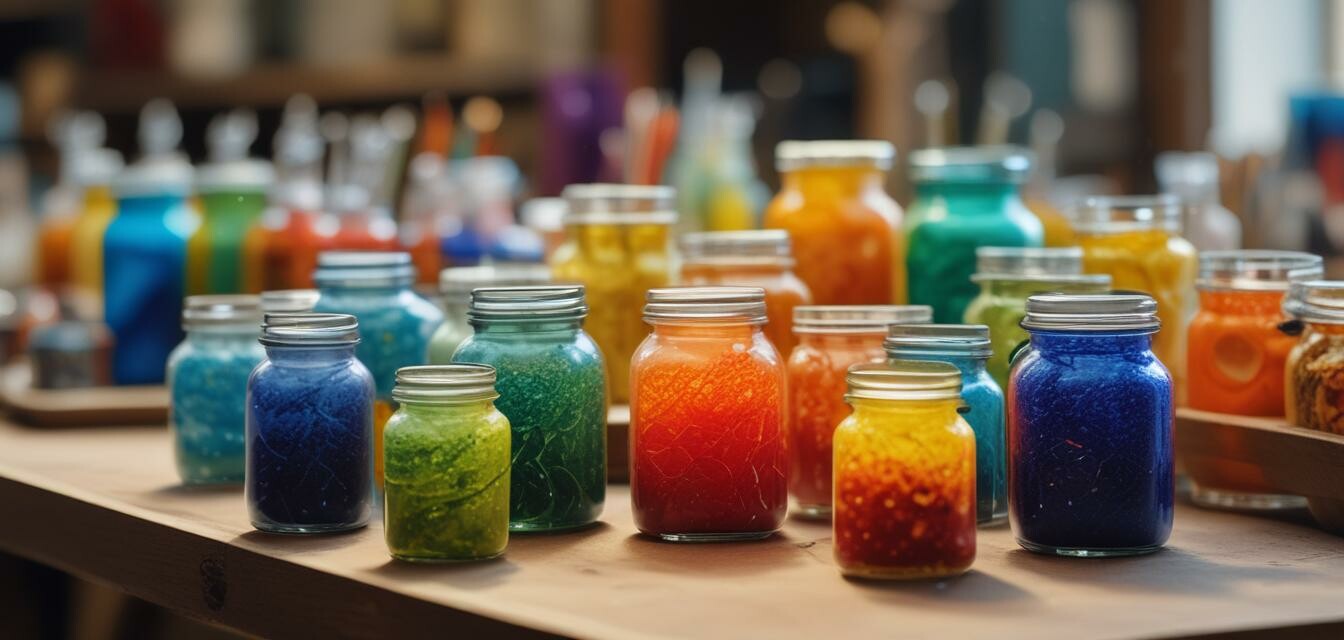
Using frit in your glass projects: A beginner's guide
- Frit is finely crushed glass used to create texture and color in glass art.
- Different types of frit include powder, medium, and coarse, each suitable for various techniques.
- Application techniques range from sprinkling onto surfaces to embedding in layers.
- Frit can be combined with other glass elements for unique effects.
- Safety precautions are essential when working with frit and other glass materials.
Frit is a fundamental material in glass art that opens up countless possibilities for creativity. In this beginner's guide, we will delve into the various types of frit, the techniques you can use with them, and some handy tips to help elevate your glass projects.
What is frit?
Frit consists of finely ground glass that can come in various colors, sizes, and textures. It is often used in glass fusing and slumping, allowing artists to create depth and vibrancy in their work. Joining the world of glass making with frit is an exciting venture for any artist.
Types of frit
| Type of Frit | Description | Usage |
|---|---|---|
| Powder Frit | Finest grind, very soft and smooth | Best for adding a dusting of color or creating a smooth finish. |
| Medium Frit | Coarser than powder, about the size of granulated sugar | Ideal for structure and texture, can be layered for depth. |
| Coarse Frit | Large particles that resemble pebbles | Great for building points of interest in a piece. |
Application techniques
There are several techniques you can explore when applying frit to your glass projects:
- Sprinkling: A technique where frit is sprinkled onto the glass surface to create a speckled effect.
- Layering: Apply different frit types or colors in layers to create dimension and complexity.
- Embedding: Frit can be embedded within thicker glass layers, enhancing visual interest when viewed from different angles.
- Mixing: You can mix different frit sizes and colors to create unique blends that feature varying textures and hues.
Tips for using frit
Beginner tips for using frit
- Start small: Begin with a few colors of frit and explore different techniques before diving into larger projects.
- Experiment with amounts: Play around with how much frit you use to see how it influences the final outcome.
- Use safety gear: Be sure to wear safety glasses and a mask to protect yourself from glass dust.
- Test your pieces: After firing, assess your work to understand frit behavior and how it reacts with your glass.
Combining frit with other glass materials
Frit can work harmoniously with a range of other glass materials. Consider incorporating:
- Colored glass sheets: Use frit as an overlay on colored glass for a unique appearance.
- Glass rods: Create interesting designs by wrapping frit around lighting rods or using them for structured decor elements.
- Glass molds: Use frit in molds to create distinct shapes and designs to enhance the finish of your glass art.
Featured product
Lampwork, Beadmaking COE 104 Starter Kit - Pro
This comprehensive kit includes essential tools and materials for creating beautiful lampworking beads with ease, perfect for beginners venturing into the art of glass making.
Learn MoreConclusion
Incorporating frit into your glass art opens a world of creativity and expression. Remember, practice and experimentation are key. With these tips and techniques, you can confidently embark on your glass-making journey. For further insights, explore our resources on fusing and slumping supplies and glass molds to enhance your skills.
Pros
- Versatile material for various applications in glass art.
- Available in diverse colors and textures.
- Easy to use for beginners with countless creative possibilities.
Cons
- Can create a bit of dust which requires safety precautions.
- Overuse can lead to a cluttered look in glass projects.


